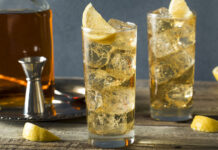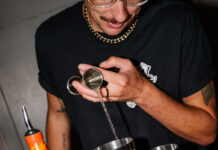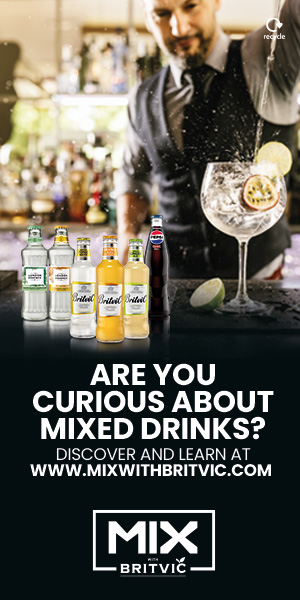Back-bar area can make a real difference to outlets’ fortunes, say equipment firms

A WELL designed and laid-out back-bar is about more than efficiency – it can have a tangible impact on a business’s bottom line.
That’s the message from equipment suppliers, who advised operators to carefully consider how they can make the most of their back-bar space in order to cut expense and maximise revenues.
Ensuring that any equipment in the back-bar area, such as fridges, ice or coffee machines, is kept clean and regularly serviced is vital, according to Williams Refrigeration.
“Back-bar refrigeration needs to be cleaned regularly,” said sales and marketing director Malcolm Harling.
“The door gaskets or seals need to be checked – any damage will affect the power consumption, so replace them right away. Get them serviced regularly, ideally under a PPM (planned preventive maintenance) contract.”
And it is important that any equipment is being used correctly, according to Mark Hogan, marketing and sales manager at Foodservice Equipment Marketing.
“When choosing an ice machine, look at the finish and the access for maintenance,” said Hogan.
“Check on the production of ice per 24 hours and compare this with your usage. If your usage varies considerably choose a machine with an adequate storage bin so you can store over production during quiet periods.
“In this way you can also reduce energy costs, for example by taking advantage of reduced night-time electricity rates.”
Energy saving is an important aspect of any new piece of back-bar equipment, said Bob Wood, sales director of DC Warewashing & Icemaking Systems.
“These days it’s all about ease of use, reliability, energy consumption and high quality wash results from the smallest possible footprint,” Wood said.
As well as providing energy-saving benefits, new technology can also help make the bar area more appealing to the eye.
“In addition to the energy saving benefits of modern units, the latest designs will introduce a refreshed, modern look to the back-bar area, providing operators with the ideal appliances for their re-designed bar areas,” said Diane Ho, commercial brand manager at Glen Dimplex Professional Appliances.
Technology itself is only one factor to consider, however. The layout of the area is also key to improving efficiency.
“Look at where equipment is sited and make sure it fits in the pattern of serving and clearing the bar area and tables,” said Paul Crowley, marketing manager at equipment supplier Winterhalter UK.
The back-bar can be a key element in exploiting sales opportunities.
“For example, site a glasswasher at the end of the bar, so staff are not struggling to get past when the door is open, and dirty glasses can be stacked neatly away from the serving area ready to be loaded.”
Sandro Formisano, chairman of design and equipment supply firm New Concept, agreed that planning the layout of the back-bar is an important step towards increasing efficiency.
“A badly designed bar is a nightmare for staff to work in so efficiency and customer service suffer as a result,” he said.
“Common mistakes are to have two pieces of kit opposite each other – for example the coffee machine opposite the glass washer.
“You should never cross over departments, your staff just fall over each other.”
But efficiency isn’t the only benefit of back-bar technology.
The right equipment can also provide an additional revenue stream for operators, say suppliers.
“In the current economic climate publicans are looking for new ways to generate extra income,” said Nick Oryino, chair of the Catering Equipment Suppliers Association.
“The back-bar can be a key element to this – there are plenty of potential sales opportunities that pubs may not be exploiting yet.
“Examples include smoothies and cocktails, speciality coffees, toasties and paninis. All can be made back of bar using compact equipment and all can deliver big profits.”
Heather Beattie, product/brand manager of Uropa Distribution, the UK wholesaler of the Samsung Professional Appliances range of products, agreed that the back-bar can be utilised by operators seeking to implement a food offer.
“Commercial microwaves are easy to operate, cook fast, are energy efficient and don’t take much space,” she said.
“They don’t produce large quantities of steam, heat or odours so, in most cases, they don’t require much in the way of extraction or ventilation.
“Even wet-led pubs like to have the option of offering bar snacks and microwaves are ideal for heating these rapidly and to food-safe temperatures.”
An investment in a quality coffee machine can help operators to take on the branded coffee shops at their own game, said Paula Jones, director of Alba Beverage Company.
Jones said the key to tapping into this market is the standard of the product, and she urged publicans not to cut corners.
“This is a false economy as regular customers will not buy again if they receive a poor tasting coffee which is served badly,” said Jones.
“There is a greater probability that a quality roasted coffee made from superior foodservice grade coffee beans will produce a higher yield from a bag of beans (more cups per bag) thus narrowing the cost per cup between a cheap and a quality coffee.”
Image – Making the most of the back-bar can increase efficiency as well as revenues, say suppliers.



















